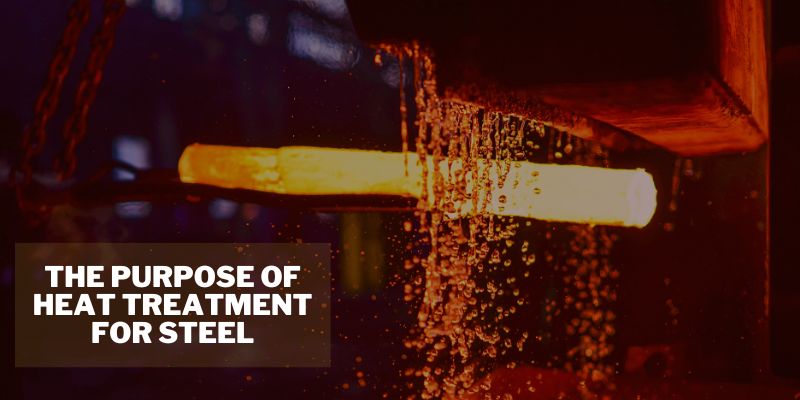Steel suppliers in Chennai suggest that the heat treatment is a critical process for steel that is used to modify its mechanical properties, such as its strength, toughness, and ductility. Heat treatment refers to a group of industrial and metalworking processes that alter the properties of a material, including steel, by subjecting it to specific heating and cooling cycles. Heat treatment can be used to improve the strength, toughness, and hardness of steel, and it is a critical step in the manufacturing of many industrial products, from gears and bearings to cutting tools and machine components.
The purpose of heat treatment for steel can be summarised in the following points:
Improving Strength And Hardness:
One of the primary purposes of heat treatment for steel is to increase its strength and hardness. Steel suppliers suggest that the heat treatment can be used to create a range of mechanical properties in steel, from soft and ductile to hard and brittle. The process involves heating the steel to a specific temperature and then cooling it rapidly to achieve a particular microstructure, which determines the material’s mechanical properties. The resulting steel is harder, stronger, and more resistant to wear and tear, making it suitable for use in demanding applications where high strength and hardness are required.
Enhancing Toughness:
JSW steel dealers in Chennai tell us that the heat treatment can also be used to enhance the toughness of steel, making it more resistant to fractures and other forms of damage. This is achieved by subjecting the steel to a specific heat treatment process that modifies its microstructure to improve its ability to absorb and dissipate energy. Toughness is a crucial property for many steel applications, including structural and mechanical components, where the material is subjected to high levels of stress and strain.
Modifying Ductility:
Heat treatment can be used to modify the ductility of steel, which refers to its ability to deform and stretch without breaking. Ductility is an important property for many applications, including metal forming and fabrication processes, where the material needs to be shaped and manipulated without breaking or fracturing. Heat treatment can be used to increase or decrease the ductility of steel, depending on the specific application.
Reducing Residual Stresses:
Heat treatment can also be used to reduce the residual stresses in steel, which are caused by uneven cooling during the manufacturing process. Residual stresses can weaken the material and increase the risk of cracking and failure. Heat treatment can be used to relieve these stresses by subjecting the steel to a specific heating and cooling cycle, Steel Dealers in Chennai say that it helps to even out the temperature distribution and reduce the internal stresses.
Refining Grain Structure:
Heat treatment can also be used to refine the grain structure of steel, which refers to the arrangement of its microscopic crystals. Refining the grain structure can improve the material’s mechanical properties, such as its strength, toughness, and ductility. Heat treatment can be used to achieve a finer and more uniform grain structure, which improves the material’s overall performance.
Controlling Machinability:
JSW dealers suggest that the heat treatment can be used to control the machinability of steel, which refers to its ability to be machined or cut into specific shapes and sizes. Controlling machinability is important in many industrial applications, including the production of machine parts and components. Heat treatment can be used to modify the microstructure of steel, making it easier or more difficult to machine, depending on the specific requirements.
In conclusion, MS steel suppliers in Chennai tell us the purpose of heat treatment for steel is to modify its mechanical properties to meet specific industrial and manufacturing requirements. Heat treatment can be used to improve the strength, hardness, toughness, and ductility of steel, as well as to refine its grain structure, reduce residual stresses, and control its machinability. Heat treatment is a critical step in the production of many industrial products, and it requires careful control of the heating and cooling cycles to achieve the desired microstructure and mechanical properties.

